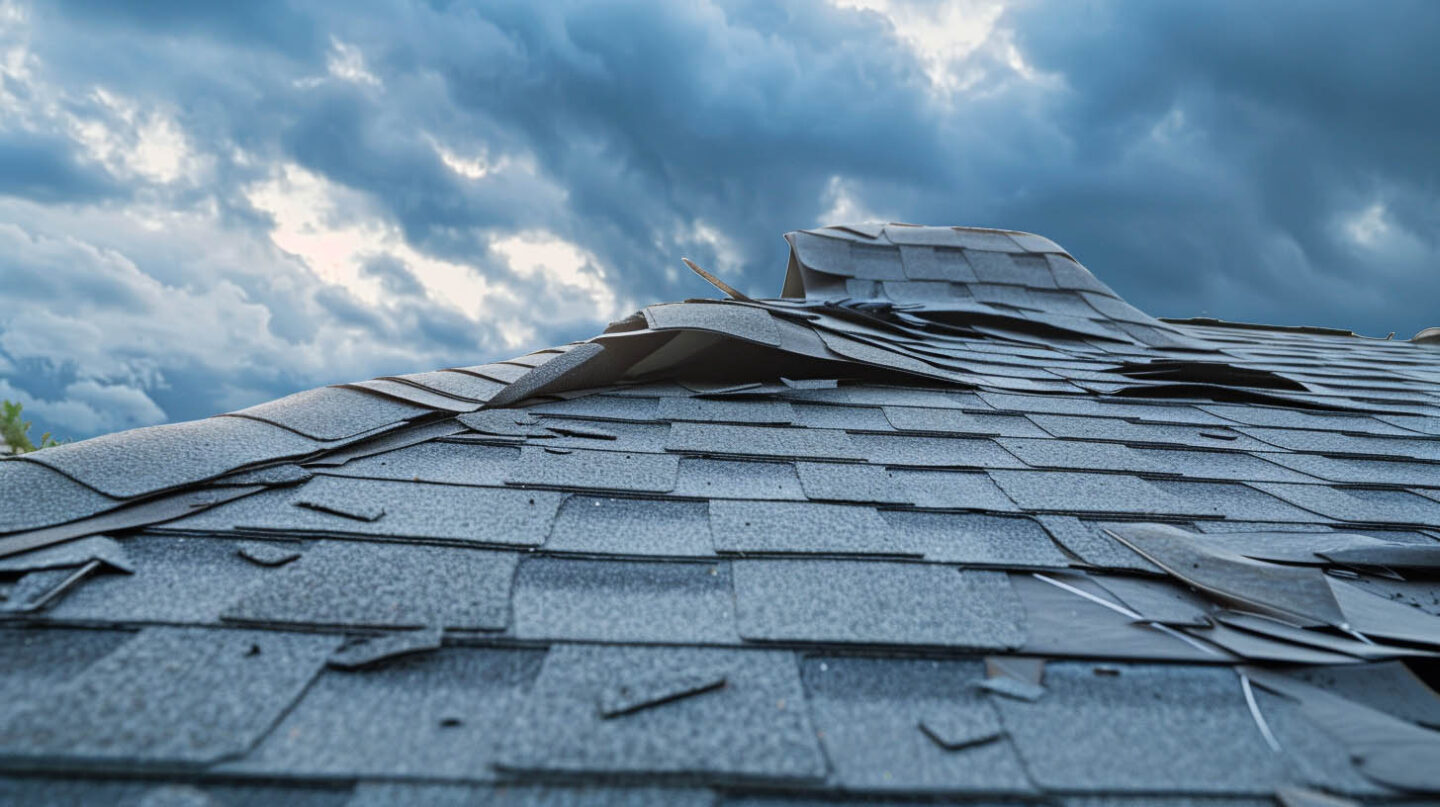Here in North Carolina, we’re no strangers to intense weather. While hurricanes get a lot of attention, other powerful events like a microburst or straight-line winds can strike with surprising force. These sudden, violent downdrafts can cause serious harm to your home, particularly your asphalt roofs. Understanding the telltale signs of this specific type of damage is crucial for protecting your property. The Shingle Master, is your local, family-owned GAF Master Elite Contractor dedicated to helping you identify the risks and keep your home secure in Clayton, NC. Our expertise ensures that you receive the highest quality service and support when it comes to safeguarding your roof against unexpected weather events.
Understanding Microbursts & Straight-Line Winds
When severe weather rolls through, the wind it produces isn’t always the same. Microbursts and straight-line winds are often responsible for concentrated storm damage that can be mistaken for other weather events. These phenomena are characterized by their high wind speed and destructive potential.
Knowing what you’re up against helps you prepare and respond effectively. Let’s look at how these events form and what makes them different from a tornado, so you can better understand the potential impact on your roof.
What Are Microbursts and How Do They Form?
Microbursts are intense, localized downdrafts that occur during thunderstorms. They form when rain-cooled air rapidly descends and spreads out upon hitting the ground, creating damaging winds. These powerful gusts can significantly impact structures, including asphalt roofs, leading to severe wind damage.
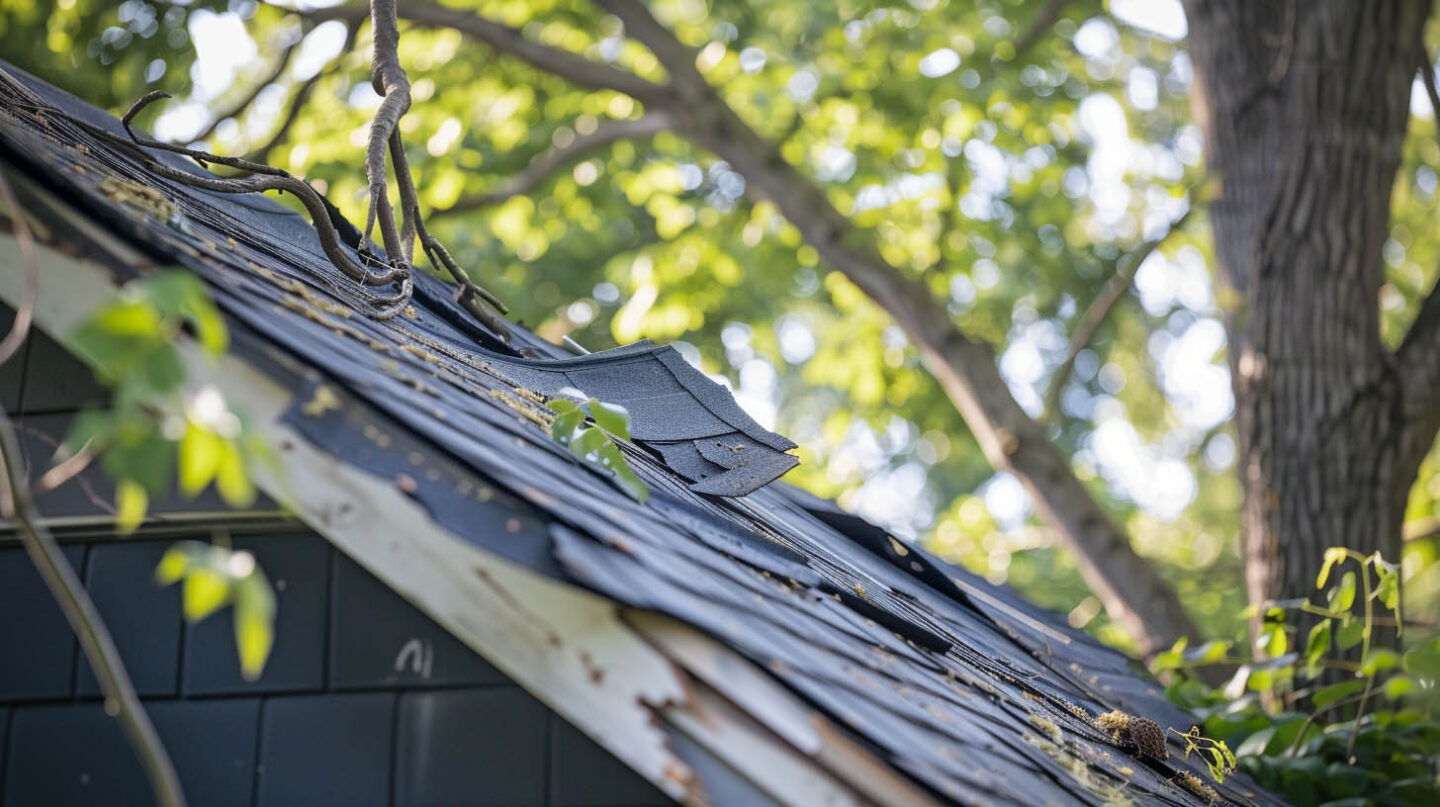
The Difference Between Microbursts, Straight-Line Winds, and Tornadoes
Understanding the differences among microbursts, straight-line winds, and tornadoes is crucial for homeowners. Microbursts are localized downdrafts producing intense winds that can cause sudden and severe damage over a small area, while straight-line winds exhibit a consistent direction, often resulting from thunderstorms. Tornadoes, however, are rotating columns of air that can create significant structural issues and catastrophic destruction. Recognizing these distinctions aids in assessing the potential risks and implementing necessary measures to protect your roof from harmful weather patterns.
Why Asphalt Roofs Are Vulnerable to Severe Wind Events
Asphalt shingles are designed to be durable, but they have their limits against extreme forces. During severe weather events involving high winds, the design of an asphalt shingle roof can make it susceptible to roof wind damage. The wind doesn’t just push against the roof; it creates uplift pressure that can get underneath the shingles and pry them loose.
This vulnerability is why a proper inspection after a storm is so important. We’ll explore the specific weak points on your roof and other factors that can make wind damage even worse.
Common Weak Points on Asphalt Roofs
Asphalt roofs, while durable, have distinct vulnerabilities that can be exploited during severe weather events. Areas where individual shingles overlap, as well as joints and flashings, are particularly prone to wind damage, often leading to missing shingles or loose materials. Aging shingles may also show granule loss, compromising their protective qualities. Homeowners should prioritize regular inspections to identify these weak points early, allowing for timely maintenance that upholds the integrity of your roof and prevents costly repairs from escalating.
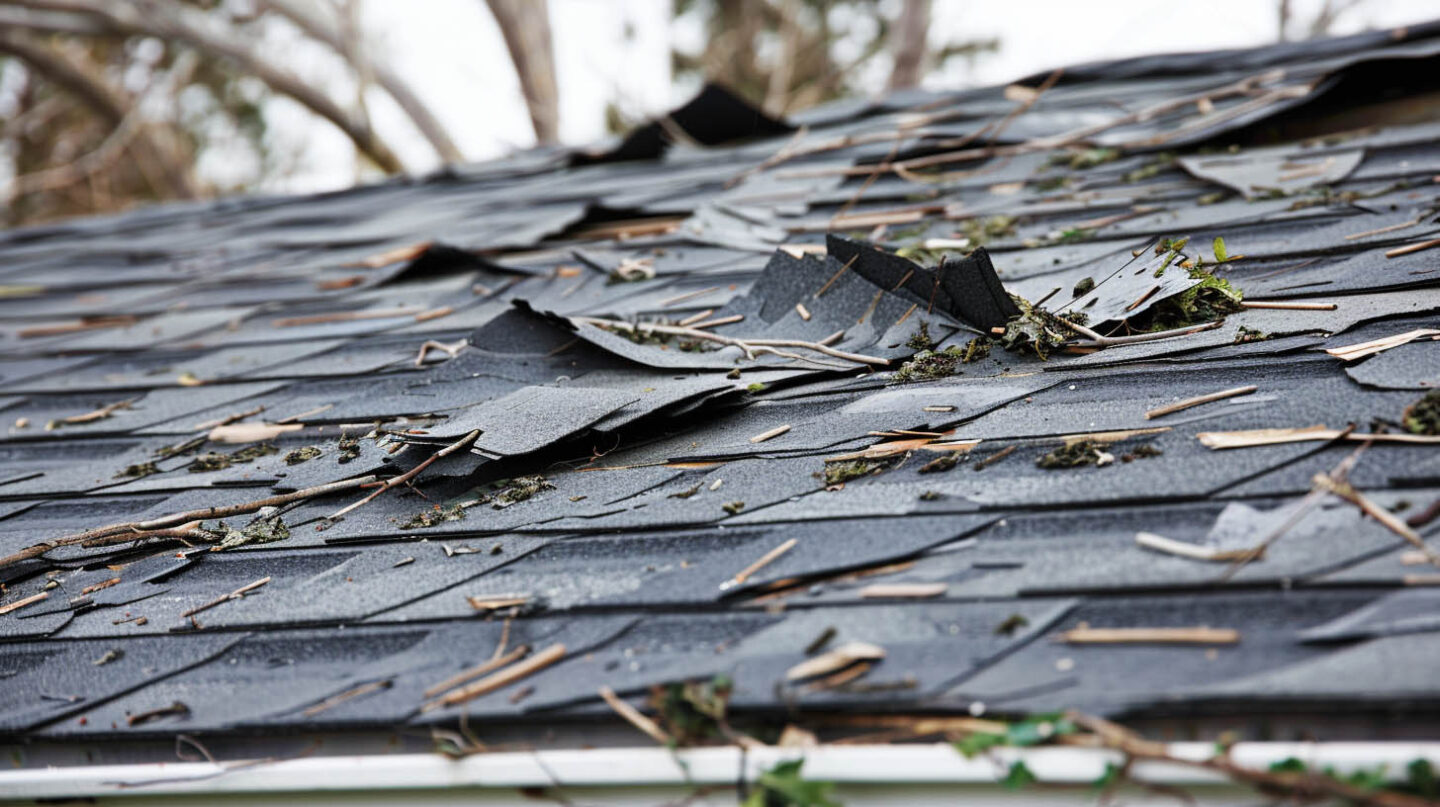
Factors Increasing Susceptibility to Wind Damage
Aging roofing materials significantly contribute to vulnerability during high winds. Asphalt shingles lose their protective granules over time, which undermines their integrity and increases the risk of damage. Furthermore, inadequate installation practices can lead to loose shingles and compromised sealants, paving the way for severe roof wind damage.
Environmental factors, such as nearby tree coverage or low wind speeds, also play a role. Regular inspections by a reputable roofing contractor can help identify weak points, enabling timely repairs before significant damage occurs.
Visible Signs of Wind Damage on Asphalt Shingles
After a severe wind storm passes, some signs of wind damage are easy to spot from the safety of the ground. The most obvious indicator is finding missing shingles in your yard. These visual cues are your first alert that your roof’s integrity has been compromised.
However, not all visible damage is as dramatic as a completely bare spot on your roof. You should also look for more subtle signs, like changes in the appearance of your shingles. Let’s cover the most common visible indicators you should look for after a storm.
Missing or Lifted Shingles After a Storm
After a storm passes, an initial inspection often reveals missing or lifted shingles, clear indicators of wind damage. These breaches can expose the integrity of your roof, leading to water intrusion or further deterioration. A reputable roofing contractor can ascertain the extent of the damage and implement necessary repairs before structural issues arise. Homeowners should document these signs to streamline the claims process with their insurance provider, ensuring that any costly repairs are promptly addressed to maintain the longevity of the roof.
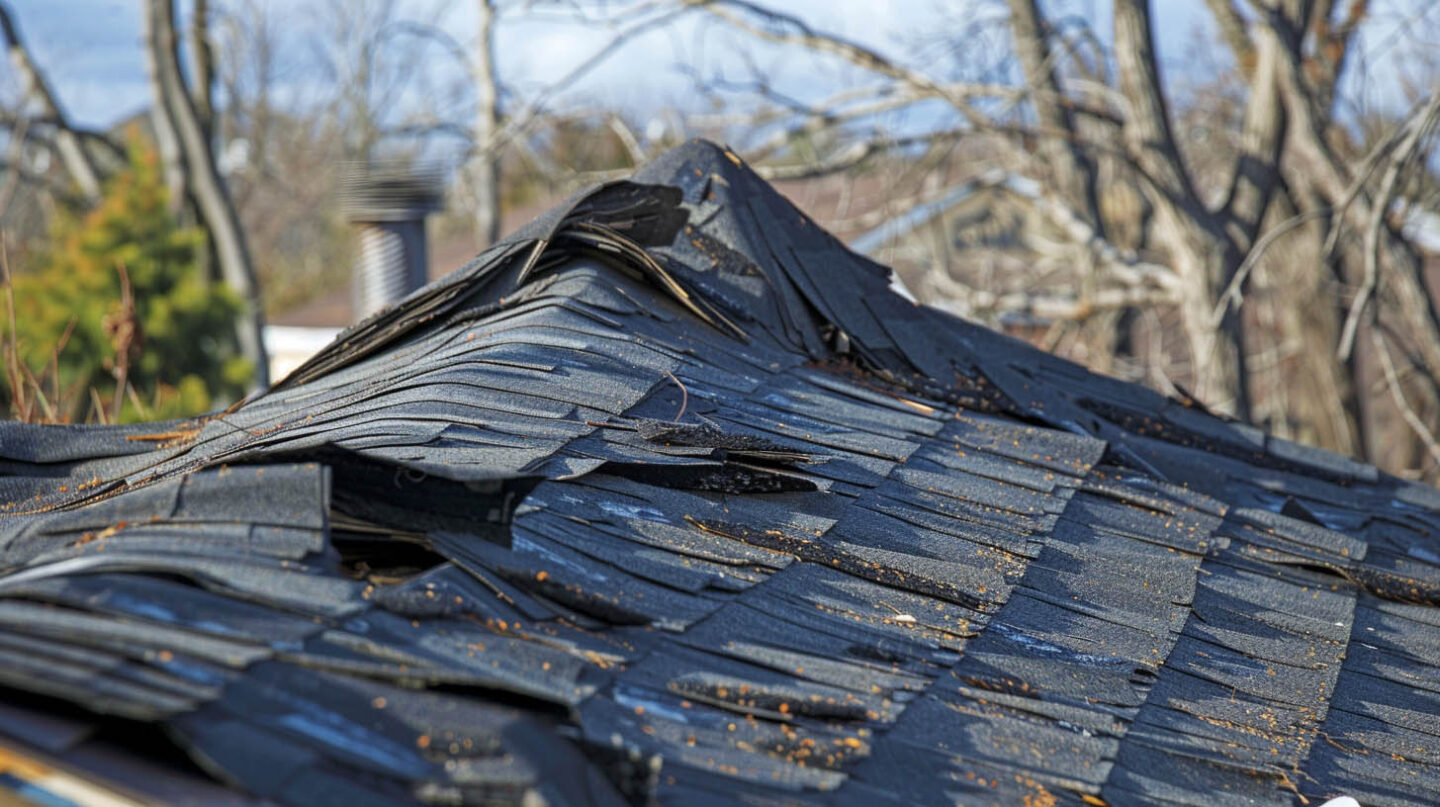
Curling, Cracking, or Creased Asphalt Shingles
Curling, cracking, or creased asphalt shingles are clear indicators of wind damage that homeowners should not overlook. These deformities compromise the integrity of your roof, exposing it to further structural issues. Regular inspections by a reputable roofing contractor can help identify these telltale signs early, potentially saving you from costly repairs. Neglecting to address these problems might lead to severe consequences, such as water intrusion and additional damage to the roofing material, making timely intervention crucial to maintaining roof safety.
Subtle and Hidden Indicators of Microburst Damage
Not all roof damage is obvious from a distance. Some of the most serious issues are hidden signs that require a closer look to identify. These subtle indicators can be just as destructive as missing shingles if left unaddressed. Spotting them early is key to preventing long-term problems and can be vital when filing an insurance claim.
Regular inspections are the best way to catch these hidden problems before they escalate. Let’s examine some of the less obvious signs of damage caused by microbursts and strong winds.
Loss of Granules and Exposed Roof Layers
Granule loss on asphalt shingles is a significant indicator of wind damage, often seen after severe weather events. These protective granules serve the crucial role of shielding the roofing material from UV rays and water intrusion. When granules are lost, underlying layers may become exposed, leading to potential structural damage over time. Homeowners should conduct regular inspections post-storm and contact a reputable roofing contractor if granule loss is suspected, as this can lead to costly repairs or necessitate a full roof replacement.
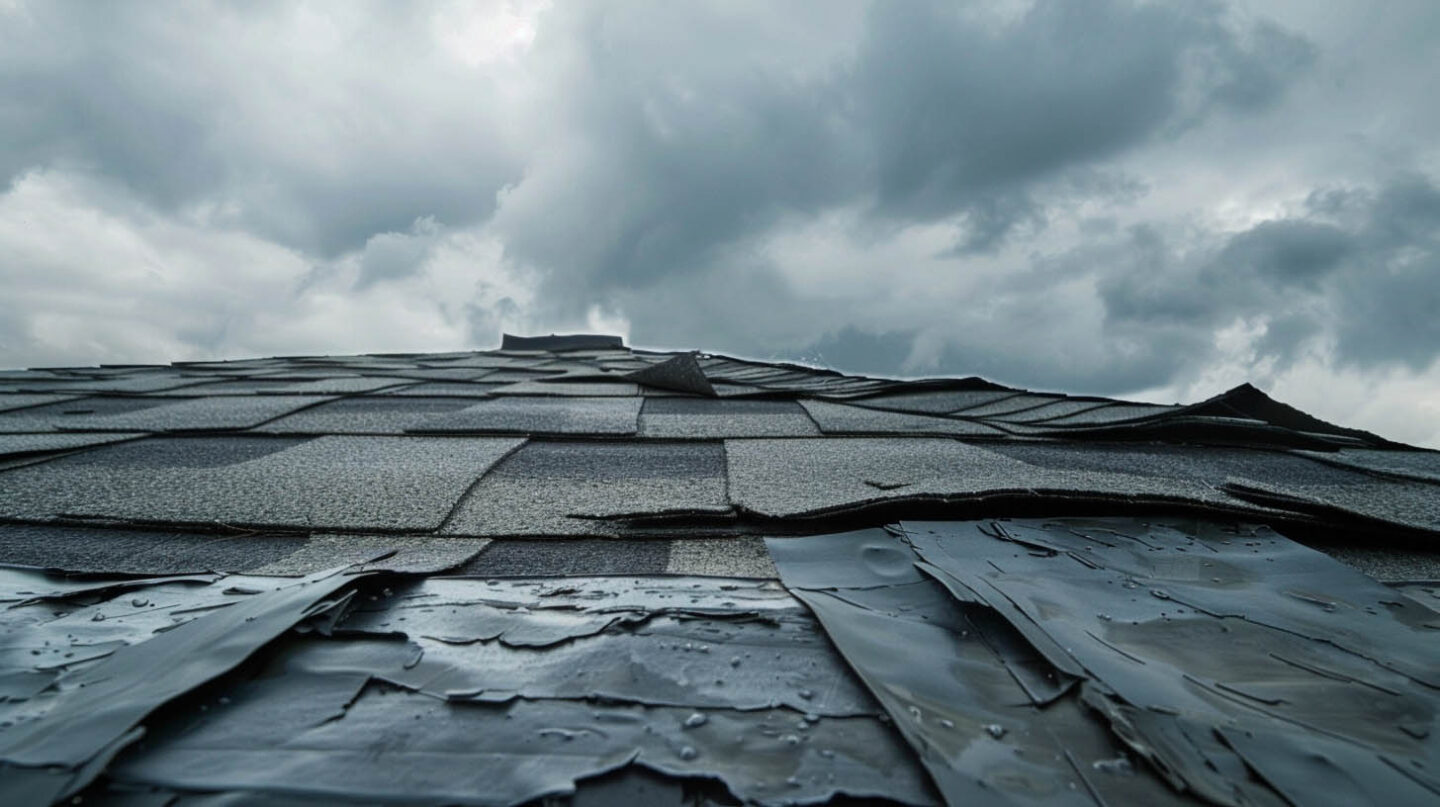
Damaged Flashing, Vents, and Roof Edges
Identifying signs of damage to roof flashing, vents, and edges is crucial for maintaining the integrity of your roof. During severe weather events, these areas can suffer from water intrusion, leading to costly repairs. Telltale signs include loose flashing or damaged roof vents, which can indicate underlying structural issues. Homeowners should schedule regular inspections with a reputable roofing contractor to assess potential wind damage, ensuring that necessary repairs are completed promptly to mitigate further damage from future storms.
What’s Next
Understanding the impact of microbursts and straight-line winds on asphalt roofs is vital for homeowners. Recognizing signs of wind damage and seeking immediate assistance from a reputable roofing contractor can avert further structural issues. Regular inspections help identify subtle yet critical indicators of damage, ensuring the integrity of your roof. Engaging with a professional roofer can guide you through the claims process with your homeowners insurance, providing peace of mind as you address necessary repairs and protect your property from costly consequences. Our awards, including GAF Master Elite Contractor, BBB A+, Haag Certified Inspector, NC Licensed General Contractor, Raleigh’s Best Roofing Contractor, NHBA, and membership in the Raleigh Chamber of Commerce, reflect our commitment to quality and reliability in roofing services.
Frequently Asked Questions
What is a microburst?
A microburst is a small, intense downdraft from a thunderstorm that produces powerful, straight-line winds upon hitting the ground. These strong winds can cause significant roof damage to asphalt shingles. The primary signs of wind from a microburst are often concentrated and severe, appearing different from typical storm damage.
Is a microburst like a tornado?
No, a microburst is not like a tornado. A tornado’s winds rotate violently, causing debris to scatter chaotically. A microburst produces damaging straight-line winds that push debris in one direction. While both can cause severe storm damage and structural issues from high wind gusts, their wind patterns are distinct.
How rare are microbursts?
While not as frequent as typical thunderstorms, a microburst is a known component of severe weather, especially in regions prone to strong storms. Because these high winds can cause unexpected and severe damage, it’s wise to contact a local roofing contractor for a roof repair assessment after any major storm.
Read our blog: Ice & Water Shield Placement per Code: What’s Really Required

